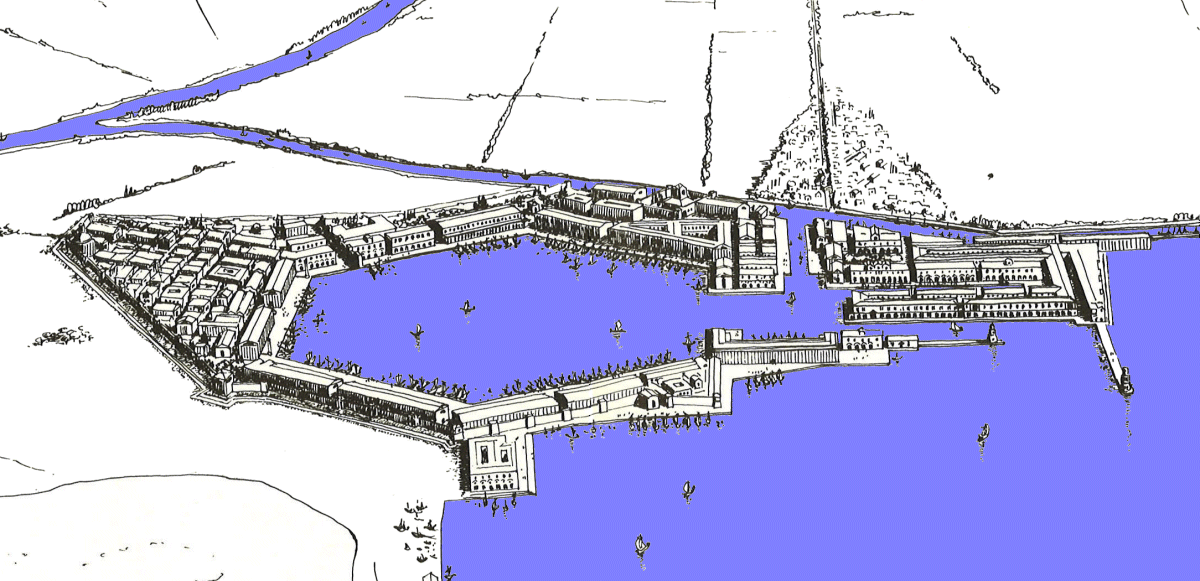Portus - Late antiquity
An inscription informs us that part of Portus was named after Constantine and his family. The inscription was set up between 337 and 341 AD by the ordo et populus civitatis Flaviae Constantinianae Portuenses, that is by the people and city council of Portus, of the Flavian Constantine city (Portus was not alone in receiving this added name). It has been argued that a more precise date for the new name can be deduced from the emergence of a bishop from Portus in 314 AD, but using the argument is tricky. As Meiggs has noted: "Civil and ecclesiastical administration did not always coincide". The bishop, Gregorius, appeared at a council in Arles, France, and was said to be de loco qui est in Portu Romae, "from the place that is in the Harbour of Rome". Most likely this civitas (of which we hear nothing more) was merely the residential part of Portus. The commercial port is referred to as Portus Romae, still property of Rome, or by now perhaps Imperial property. The Imperial official responsible for the port was now the praefectus Annonae himself, later a comes portus urbis Romae.
Legal sources (the Codex Theodosianus) document the activity in the harbour in the fourth and fifth century. We hear of weighers, porters, shippers of tow boats, ships arriving from Spain and so on. And there was renewed building activity. The temple of Liber Pater was restored. A Porticus Placidiana commemorated Placidia, mother of the Emperor Valentinian III. Christian churches appeared and a xenodochium, a guest house for pilgrims. But a city wall was also needed, and it was erected around 400 AD or at the end of the fifth century. It incorporated parts of warehouses.
Portus was captured by Alaric and the Goths in 409 AD, and by the Vandals, led by their king Gaeseric, in 455 AD. The city was captured by the Goths led by Vitigis in 537 AD. This event was described in great detail by Procopius. The horrea were abandoned in the fifth and sixth century, collapsed, and were then used for burials. In the eighth century Trajan's basin became inaccessible due to silt brought in by the Tiber. In the ninth century there were invasions by the Saracens. These led to the foundation in 842 of the fortified settlement Gregoriopolis to the east of Ostia, by pope Gregorius IV. Pope Leo IV (847-855) restored the city wall of Portus and made gifts to a church. The last year in which we know that the harbour was still in use is 879 AD. Many churches stayed in use, witness a survey of the diocese of Portus in 1019. In 1190 Richard the Lionheart saw remains of the lighthouse of Claudius and immense ruins.

Reconstruction drawing of Trajan's harbour, seen from the north. Testaguzza 1970, p. 154-155.